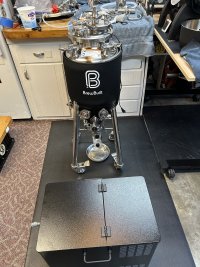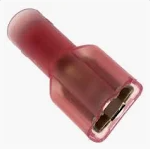- Joined
- Mar 12, 2021
- Messages
- 201
- Reaction score
- 603
So my X3 conical, IceMaster Max2 and lots of accessories arrived. I've been busy getting familiar with the pieces, cleaning/sanitizing/pressure/leak testing.
Now I have questions related to work flow. I'm coming from a Fermzilla conical/w/jacket, TempTwister, 10 gal Igloo cooler with pump and frozen water bottles, and Inkbird controller, and Fermwrap, which gave me pretty damn good temp control.
Now with a Glycol chiller, and a thermowell I understand how the Glycol chiller monitors the fermenter temp. But I confused about how the Fermwrap integrated into the temp control mix. Should I buy another thermowell for the Inkbird probe?
I had a pretty good handle on temp control although a little crude, but very effective. I now need to rethink my whole process. I'm sure some of you have this figured out.
Thanks in advance for sharing.
John
picture just for grins
Now I have questions related to work flow. I'm coming from a Fermzilla conical/w/jacket, TempTwister, 10 gal Igloo cooler with pump and frozen water bottles, and Inkbird controller, and Fermwrap, which gave me pretty damn good temp control.
Now with a Glycol chiller, and a thermowell I understand how the Glycol chiller monitors the fermenter temp. But I confused about how the Fermwrap integrated into the temp control mix. Should I buy another thermowell for the Inkbird probe?
I had a pretty good handle on temp control although a little crude, but very effective. I now need to rethink my whole process. I'm sure some of you have this figured out.
Thanks in advance for sharing.
John
picture just for grins










































![Craft A Brew - Safale S-04 Dry Yeast - Fermentis - English Ale Dry Yeast - For English and American Ales and Hard Apple Ciders - Ingredients for Home Brewing - Beer Making Supplies - [1 Pack]](https://m.media-amazon.com/images/I/41fVGNh6JfL._SL500_.jpg)
















